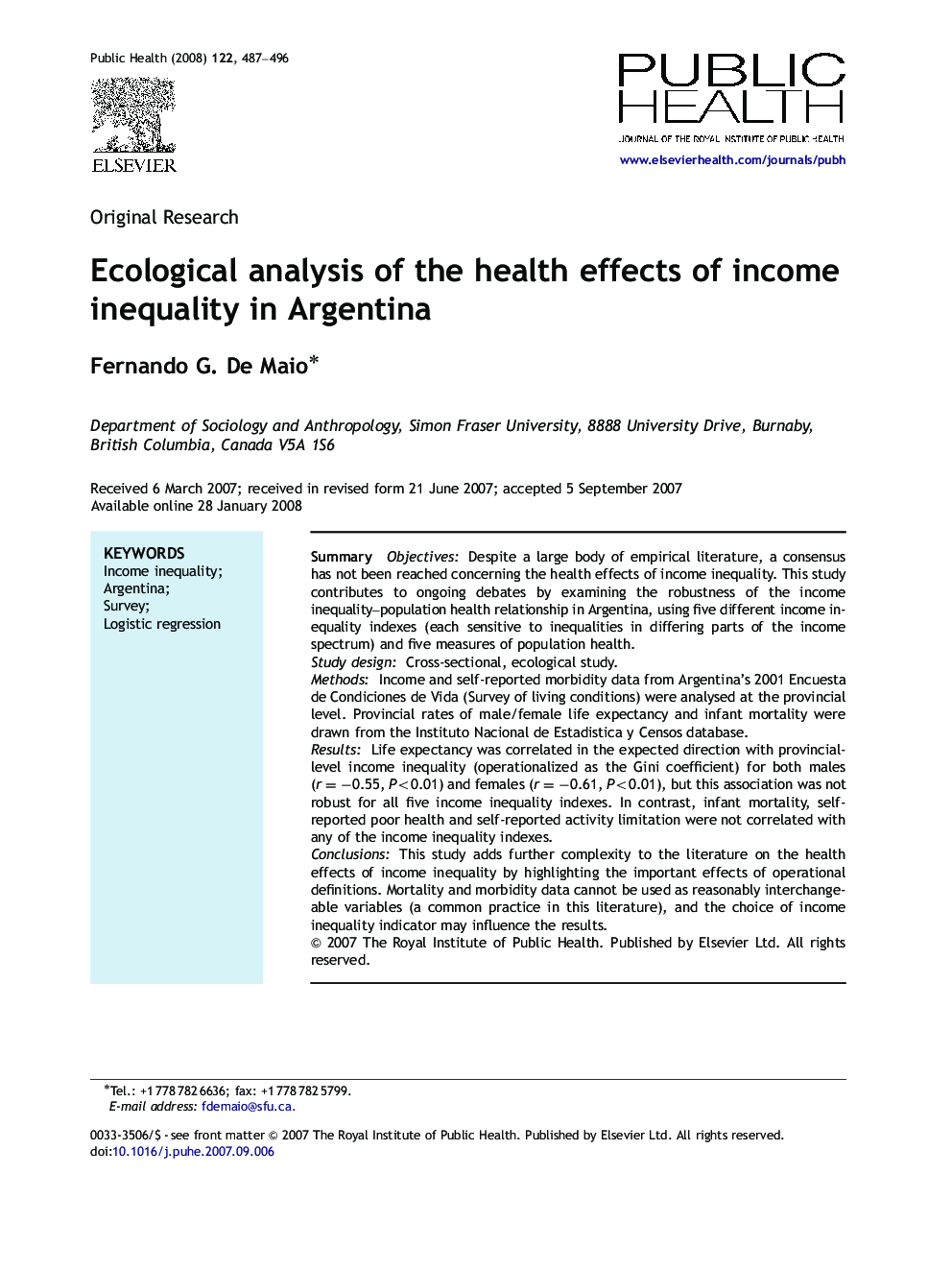| کد مقاله | کد نشریه | سال انتشار | مقاله انگلیسی | نسخه تمام متن |
|---|---|---|---|---|
| 1089121 | 951635 | 2008 | 10 صفحه PDF | دانلود رایگان |

SummaryObjectivesDespite a large body of empirical literature, a consensus has not been reached concerning the health effects of income inequality. This study contributes to ongoing debates by examining the robustness of the income inequality–population health relationship in Argentina, using five different income inequality indexes (each sensitive to inequalities in differing parts of the income spectrum) and five measures of population health.Study designCross-sectional, ecological study.MethodsIncome and self-reported morbidity data from Argentina's 2001 Encuesta de Condiciones de Vida (Survey of living conditions) were analysed at the provincial level. Provincial rates of male/female life expectancy and infant mortality were drawn from the Instituto Nacional de Estadistica y Censos database.ResultsLife expectancy was correlated in the expected direction with provincial-level income inequality (operationalized as the Gini coefficient) for both males (r=−0.55, P<0.01) and females (r=−0.61, P<0.01), but this association was not robust for all five income inequality indexes. In contrast, infant mortality, self-reported poor health and self-reported activity limitation were not correlated with any of the income inequality indexes.ConclusionsThis study adds further complexity to the literature on the health effects of income inequality by highlighting the important effects of operational definitions. Mortality and morbidity data cannot be used as reasonably interchangeable variables (a common practice in this literature), and the choice of income inequality indicator may influence the results.
Journal: Public Health - Volume 122, Issue 5, May 2008, Pages 487–496